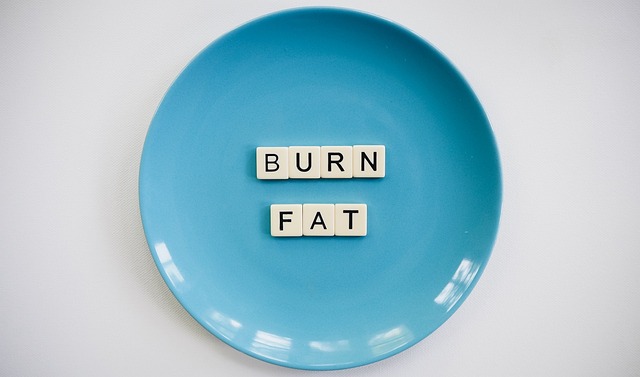Calories measure energy content in food, while fat is a macronutrient providing calories and serving various physiological functions.
Understanding Calories Vs. Fat
To understand the difference between calories and fat, it’s important to know their definitions and how they relate to each other:
Calories: Calories are a unit of measurement that represents the energy content of food or beverages. When we consume food, our bodies break down the carbohydrates, proteins, and fats present into smaller molecules, which are then used as fuel to provide energy for bodily functions.
Fat: Fat is a nutrient that is a concentrated source of energy. It is one of the three macronutrients, along with carbohydrates and protein. Fats are essential for various bodily functions, including providing insulation, protecting organs, and aiding in the absorption of fat-soluble vitamins.
Key Differences:
- Composition: Fat is a nutrient, while calories are a measurement of energy.
- Energy Content: Fat is a concentrated source of calories. It provides 9 calories per gram, making it the most energy-dense macronutrient. Carbohydrates and protein provide 4 calories per gram.
- Role in the Body: Fat plays a vital role in providing energy for prolonged activities, insulating and protecting organs, and supporting hormone production. Calories, on the other hand, are a measurement of the energy derived from various nutrients, including fat.
- Weight Gain: Consuming excess calories, regardless of their source (carbohydrates, protein, or fat), can lead to weight gain. High intake of calorie-dense foods that are high in fat can contribute to weight gain more quickly.
- Dietary Recommendations: Health authorities generally recommend balancing calorie intake with calorie expenditure for weight management. They also recommend consuming moderate amounts of healthy fats as part of a balanced diet.
Understanding the difference between calories and fat is crucial for making informed dietary choices and maintaining a healthy lifestyle. While fat is an important nutrient, it’s essential to consume it in appropriate amounts and balance calorie intake overall.
What Are Calories?

Calories are a unit of measurement used to quantify the amount of energy provided by food and drinks. They represent the energy that our bodies need to function properly and perform various activities.
Calories are determined by analyzing the macronutrients present in food, including carbohydrates, proteins, and fats. Each gram of carbohydrates and proteins contains 4 calories, while a gram of fat contains 9 calories.
When we consume food, our bodies break down these macronutrients and convert them into energy. This energy is utilized for basic bodily functions such as breathing, digestion, and circulation. It also fuels activities like walking, running, and exercising.
Understanding calories is essential for maintaining a healthy diet and managing weight. By knowing the calorie content of different foods, we can make informed choices about what to eat and how much to consume. Consuming more calories than our bodies require can lead to weight gain, while consuming fewer calories can result in weight loss.
To determine the number of calories in a particular food or drink, it is important to read and understand nutrition labels. These labels provide information about the serving size and the calorie content per serving.
Calories are units of energy found in food and beverages that our bodies utilize for daily functioning and physical activities. Understanding the calorie content of our diet is crucial for maintaining a healthy weight and overall well-being.
To make healthier choices, consider opting for nutrient-dense foods that provide essential vitamins and minerals along with fewer calories. Incorporating regular physical activity into your daily routine can help burn excess calories and support overall health and fitness goals.
How Are Calories Measured?
Calories are measured using a unit of energy known as a kilocalorie, which is often referred to as a calorie. One calorie is equivalent to the amount of energy required to raise the temperature of one gram of water by one degree Celsius. The calorimetry method is commonly used to determine the number of calories in food and beverages. This involves burning a sample of the food or drink in a controlled environment and measuring the heat produced. The heat is then converted into calories.
Food labels typically display the calorie content per serving size, allowing consumers to make informed choices about their dietary intake. The calorie content reported on food labels is based on averages and can vary slightly depending on factors such as cooking methods and variations in ingredients.
When it comes to estimating calorie intake for weight management or tracking purposes, individuals can use various methods. These include using online calculators or smartphone apps that provide estimated calorie values for different foods and portion sizes. These tools consider factors like macronutrient composition and serving size to provide a more accurate estimation of calories consumed.
To ensure accuracy, it’s important to weigh and measure food portions whenever possible. Keeping a food diary or using a mobile app to track daily calorie intake can help individuals monitor their progress towards their weight management goals.
Measuring calories involves using the calorimetry method to determine the energy content of food and beverages. Understanding how calories are measured can assist individuals in making informed choices about their dietary intake and achieving their weight management goals.
NOTE: Remember to always consult with a healthcare professional or registered dietitian for personalized advice on calorie intake and weight management.
What Is Fat?
When it comes to our health and nutrition, understanding the difference between calories and fat is crucial. In this section, we’ll dive into the world of fats and explore their role in our bodies. Get ready to uncover the hidden truths and gain valuable insights about the relationship between calories and fat.
Difference Between Calories and Fat
The distinction between calories and fat can be clarified in the following ways:
- Calories represent a measurement of energy, while fat is a specific type of nutrient.
- Calories are obtained from various sources in our diet, including carbohydrates, proteins, and fats, whereas fat is a particular type of nutrient found in foods.
- The body utilizes calories as fuel for energy, while it stores fat as a reserve for energy.
- Calories are quantified in units known as kilocalories (kcal) or calories (cal), while fat is quantified in grams.
- Calories can be obtained from both healthy and unhealthy sources, but it is important to choose nutrient-dense foods that offer essential vitamins and minerals in addition to calories.
- Fat is categorized into different types, such as saturated, unsaturated, and trans fats, each of which has a distinct impact on health.
- Consuming excess calories can result in weight gain, while consuming excessive fat can elevate the risk of obesity and certain health conditions.
- A well-balanced diet includes a moderate amount of both calories and healthy fats to promote overall health and sustain a healthy weight.
- Awareness of the distinction between calories and fat can empower individuals to make informed choices about their diet, ensuring they consume an appropriate balance of nutrients.
How Do Calories and Fat Interact?
When it comes to our dietary choices, understanding the dynamic relationship between calories and fat is essential. In this section, we’ll dig into the fascinating interplay between calories and fat, exploring everything from the definition of fat to the role it plays in our bodies. We’ll unveil the energy content of fat, its impact on weight management, and even dive into how fat can affect our overall health. Get ready to unravel the mystery behind calories and fat!
Definition of Fat
The definition of fat is crucial when it comes to understanding its role in our bodies. Fat is a nutrient that is necessary for proper bodily function. It is a high-energy food, providing 9 calories per gram, which is more than twice the amount provided by carbs or protein. Fat is composed of fatty acids, which can be categorized as saturated, unsaturated, or trans fats.
Saturated fats are solid at room temperature and are commonly found in animal products like meat, butter, and full-fat dairy. Consuming excessive amounts of saturated fats has been linked to an increased risk of heart disease. On the other hand, unsaturated fats are usually liquid at room temperature and can be found in plant-based oils, nuts, seeds, and fatty fish. These fats are considered healthier options and can support heart health.
Trans fats, which are artificially produced through a process called hydrogenation, should be avoided as much as possible. These fats are often present in processed foods, fried foods, and baked goods. Studies have shown that trans fats significantly elevate the risk of heart disease.
Understanding the definition of fat is crucial for maintaining a healthy diet. While fat is necessary for bodily functions, it is important to consume it in moderation and choose healthy fats over unhealthy ones. Incorporating a variety of unsaturated fats into our diet while limiting saturated and trans fats can promote overall health and well-being.
Fact: Did you know that fats play a vital role in nutrient absorption? Some vitamins, such as vitamins A, D, E, and K, are fat-soluble, meaning they are better absorbed and utilized by the body when consumed with fat.
Energy Content of Fat
The energy content of fat is a crucial factor to consider when it comes to weight management and comprehending the role of fat in the body. Below is a table that presents valuable information about the energy content of various types of fat per gram:
| Type of Fat | Energy Content (in calories) |
| Saturated Fat | 9 calories |
| Monounsaturated Fat | 9 calories |
| Polyunsaturated Fat | 9 calories |
| Trans Fat | 9 calories |
As highlighted in the table, all types of fat contain 9 calories per gram. This energy content surpasses that of carbohydrates and protein, both of which contain 4 calories per gram. It’s important to recognize that while fat serves as a concentrated source of energy, it also plays a vital role in numerous bodily functions.
Consuming an excessive amount of calories from any source, including fat, can result in weight gain. To maintain a healthy weight, it is crucial to ensure a balance between caloric intake and physical activity. Opting for healthier fats, such as monounsaturated and polyunsaturated fats found in nuts, seeds, and oils, can have positive impacts on overall health.
Role of Fat in the Body
The role of fat in the body is significant, as it serves as a source of energy, insulation and protection for vital organs, aids in the absorption of certain vitamins, and plays a role in hormone regulation, cell function, and satiation. Fat is an essential nutrient that should be included as part of a balanced diet.
As an energy source, fat provides 9 calories per gram and serves as a backup fuel source when carbohydrates are not readily available, such as during prolonged exercise or fasting.
Furthermore, fat acts as insulation, keeping the body warm in cold temperatures, and also acts as a cushion to protect organs from impact and provide support.
The absorption of fat-soluble vitamins, such as vitamins A, D, E, and K, requires fat. These vitamins are essential for various bodily functions, including vision, bone health, and immune system function.
Fat also plays a role in hormone regulation, including sex hormones. These hormones are vital for reproductive health and overall well-being.
Additionally, fat is a component of cell membranes, contributing to their structure and function. It facilitates cell communication and helps maintain their integrity.
Incorporating healthy fats in meals promotes satiety and helps regulate appetite, which can aid in weight management by reducing the desire to overeat.
Weight Management and Fat

Achieving and maintaining a healthy weight involves effectively managing weight and fat.
The key to weight management lies in finding a balance between caloric intake and exercise.
Weight gain is the result of consuming more calories than you burn, while weight loss occurs when you burn more calories than you consume.
When it comes to calories, fat is a dense source with 9 calories per gram, while carbohydrates and proteins contain 4 calories per gram.
To successfully manage weight, it is crucial to monitor fat intake and opt for healthier sources of fat.
Opting for good fats, such as monounsaturated and polyunsaturated fats, found in foods like avocados, nuts, and olive oil, is essential.
On the other hand, it is important to limit trans fats and saturated fats, which are commonly found in processed foods and red meat, as they contribute to weight gain and increase the risk of heart disease.
Along with monitoring fat intake, regular exercise plays a vital role in weight management.
Exercise aids in burning calories, building muscle, and boosting metabolism, supporting weight loss and maintenance.
Striking a balance between consuming enough calories to meet energy needs and creating a calorie deficit through exercise is crucial for successful weight loss.
Seeking professional guidance, such as consulting with a registered dietitian or a personal trainer, can offer personalized advice and support in effectively managing weight and fat.
Health Impact of Fat
The health impact of fat is significant and can have both positive and negative effects on the body. Understanding the role that fat plays in our overall well-being is important.
- Fat, contrary to popular belief, is an essential nutrient that the body needs for various functions. It provides energy, helps absorb certain vitamins, and supports cell growth.
- Not all fats are created equal. There are healthy fats, such as unsaturated fats found in avocados, nuts, and olive oil, which can have a positive impact on heart health. However, saturated fats found in red meat and fried foods should be consumed in moderation to reduce the risk of heart disease.
- Consuming excess fat can lead to weight gain and obesity. Fat is more calorie-dense than other nutrients, so portion control and choosing healthier sources of fat are important.
- A diet high in unhealthy fats can increase cholesterol levels and contribute to heart disease. Conversely, a diet rich in healthy fats can help lower cholesterol and reduce the risk of heart problems.
- Consuming a balanced amount of healthy fats can positively impact overall health. It can improve brain function, enhance skin health, and support hormone production.
It’s important to note that everyone’s dietary needs are unique. Consulting with a healthcare professional or registered dietitian can provide personalized guidance tailored to individual health goals and conditions.
How Calories and Fat Relate to Weight Loss and Exercise
When it comes to weight loss and exercise, understanding the relationship between calories and fat is vital. In this section, we’ll dive into how calories and fat play a role in achieving your fitness goals. From burning calories through exercise to finding the right balance between caloric intake and physical activity, we’ll unravel the secrets behind effective weight loss strategies. Get ready to uncover the science and strategies that will help you on your journey to a healthier you.
Burning Calories through Exercise
To burn calories through exercise and achieve your weight management goals, you can consider the following options:
- Cardiovascular exercises: Engage in activities like running, cycling, swimming, or dancing. These exercises increase your heart rate and help burn calories effectively.
- High-intensity interval training (HIIT): Incorporate HIIT workouts into your routine. These involve short bursts of intense exercises followed by periods of rest. HIIT workouts are known to burn a significant amount of calories in a shorter time.
- Strength training: Include strength training exercises, such as weightlifting or bodyweight exercises, in your workout routine. Building lean muscle mass can increase your metabolism and help you burn more calories throughout the day.
- Circuit training: Combine various exercises into a circuit-style workout. This allows you to target different muscle groups and keep your heart rate elevated, resulting in calorie burning.
- Increase physical activity throughout the day: Apart from formal exercise sessions, incorporate more physical activity into your daily routine. Take the stairs instead of the elevator, walk or bike instead of driving short distances, and stand or walk around while on phone calls.
Remember, the number of calories burned during exercise depends on various factors such as intensity, duration, and individual characteristics. It’s important to find activities that you enjoy and can sustain in the long term. Before starting any exercise regimen, consult a healthcare professional or certified trainer to ensure you’re engaging in safe and suitable exercises for your fitness level.
Incorporating regular exercise into your lifestyle, along with a balanced diet, can help you in burning calories through exercise and achieving your weight management goals. So get moving and start burning those calories!
Diet and Weight Loss
- Incorporating a healthy diet plays a crucial role in weight loss and achieving your desired body weight.
- To achieve weight loss, it is important to create a calorie deficit by consuming fewer calories than you expend. This can be done by following a balanced diet that focuses on whole, nutrient-dense foods.
- For effective weight loss, make sure to include a variety of fruits, vegetables, lean proteins, whole grains, and healthy fats in your diet. This will ensure that you are getting all the necessary nutrients while keeping your calorie intake in check.
- Avoiding processed and sugary foods is essential as they are high in calories and provide little nutritional value.
- In addition to a healthy diet, incorporating regular exercise is important to further enhance weight loss. It helps to increase calorie burn and improve overall fitness levels.
- Pay attention to your body’s hunger and fullness cues and practice mindful eating. Avoiding restrictive diets and embracing sustainable lifestyle changes is key for long-term success.
- For personalized recommendations and to develop a sustainable and effective weight loss plan, consider seeking professional guidance from a registered dietitian.
Balancing Caloric Intake and Exercise
When it comes to balancing caloric intake and exercise, there are several important factors to consider:
- Caloric intake: It is crucial to have a clear understanding of your daily caloric needs based on your age, gender, activity level, and weight goals. Strive to maintain a balanced diet that includes a variety of nutrient-dense foods.
- Exercise routine: Regular physical activity plays a vital role in maintaining a healthy weight and overall well-being. Select exercises that you enjoy and that align with your fitness level and goals. Incorporate a combination of cardiovascular exercises, strength training, and flexibility exercises.
- Burning calories: Engaging in activities that burn calories is essential for creating an energy deficit, which contributes to weight loss. Opt for cardiovascular exercises such as running, swimming, or cycling, as they help burn a significant number of calories.
- Tracking progress: Keep track of your caloric intake and exercise output to ensure a healthy balance. Take advantage of tools like fitness apps or wearable devices to monitor your daily calorie burn and consumption.
- Adjusting as needed: If you find yourself not meeting your weight loss or fitness goals, you may need to make adjustments to your caloric intake and exercise routine. Seek guidance from a registered dietitian or fitness professional for personalized advice.
Ultimately, achieving the right balance between caloric intake and exercise is a unique process that may require experimentation and adjustments to find what works best for you. Remember to prioritize your overall health and well-being rather than solely focusing on weight loss or excessive exercise.
Factors to Consider for Weight Management
When it comes to weight management, there are several factors to consider:
- Calories: Calories are a measure of energy. They represent the amount of energy provided by the food and beverages we consume. To maintain weight, the number of calories consumed should roughly match the number of calories burned through physical activity and bodily functions. Consuming excess calories can lead to weight gain, while a calorie deficit can result in weight loss.
- Fat: Fat is a nutrient that provides a concentrated source of energy. It is essential for various bodily functions, such as insulation, hormone production, and vitamin absorption. Consuming excessive amounts of dietary fat can contribute to weight gain, as fat is calorie-dense. It’s important to choose healthy sources of fat, such as avocados, nuts, and olive oil, and moderate the overall intake.
- Nutrient Density: When managing weight, it is crucial to focus on the nutrient density of food. Nutrient-dense foods provide essential vitamins, minerals, and other beneficial compounds while being relatively low in calories. Prioritizing nutrient-dense options, such as fruits, vegetables, whole grains, and lean proteins, can help maintain a healthy weight.
- Portion Control: Portion control plays a significant role in weight management. Even healthy foods can contribute to weight gain if consumed in excessive quantities. Being mindful of portion sizes and practicing moderation is key to maintaining a healthy balance.
- Physical Activity: Regular physical activity is essential for weight management. Engaging in activities that increase heart rate and burn calories can help create a calorie deficit and contribute to weight loss. Combining aerobic exercises, strength training, and flexibility exercises can provide various health benefits and support weight management.
- Individual Factors: Each person’s metabolism, body composition, and overall health can influence weight management. Factors such as age, genetics, hormonal balance, and underlying medical conditions can impact an individual’s ability to lose or maintain weight. It’s important to consider these individual factors and work with healthcare professionals or registered dietitians for personalized guidance.
By considering these factors and adopting a balanced approach that focuses on overall calorie intake, nutrient density, portion control, physical activity, and individual needs, one can effectively manage their weight and promote overall well-being.
Seeking Professional Guidance
When it comes to understanding the difference between calories and fat, it is highly recommended to seek professional guidance, such as a registered dietitian or nutritionist. These experts can provide personalized advice and help you navigate the complexities of nutrition and weight management.
A registered dietitian or nutritionist can:
- Educate on Basic Concepts: They can explain the fundamental concepts of calories and fat, including how they relate to each other and their impact on overall health and weight.
- Assess Individual Needs: By considering factors such as age, gender, activity level, and specific health conditions, they can determine your individual calorie and fat intake requirements.
- Create Balanced Meal Plans: They can develop personalized meal plans that consider your dietary preferences, nutritional needs, and weight goals, ensuring that you consume an appropriate balance of calories and healthy fats.
- Provide Nutritional Guidance: They can offer practical tips and strategies for making healthier food choices, understanding food labels, and incorporating proper portion sizes into your diet.
- Monitor Progress: They can regularly monitor your progress and make necessary adjustments to your calorie and fat intake based on your changing needs and goals.
- Address Concerns and Myths: They can address any concerns or misconceptions you may have about calories and fat, debunking common myths and providing evidence-based information.
- Consider Overall Health: A registered dietitian or nutritionist can take into account your overall health and help you manage conditions such as diabetes, heart disease, or high cholesterol through proper calorie and fat management.
Remember, professional guidance is essential to receive accurate and individualized advice regarding calories and fat. They can provide the necessary support and guidance to help you make informed decisions about your nutrition and overall well-being.
Frequently Asked Questions
What’s the difference between calories and fat?
Calories and fat are different aspects of nutrition and energy in the human body. Calories are a unit of measurement used to indicate the amount of energy released when the body breaks down food. On the other hand, fat is a type of nutrient, one of the six essential nutrients, that provides more than twice as many calories per gram as carbohydrates and proteins.
How are calories and fat related to weight gain?
Calories and fat can contribute to weight gain when consumed in excess. Calories that are not used as energy by the body are stored as fat, leading to an increase in body weight. Excess fat is stored in fat cells and can result in weight gain. It is important to maintain a balance between calorie intake and calorie expenditure to manage weight effectively.
Do all fats need to be avoided for weight loss?
No, not all fats need to be avoided for weight loss. While certain types of fats, such as saturated and trans fats, can raise LDL cholesterol levels and increase the risk of heart disease, unsaturated fats are beneficial and necessary for health. Cutting out fats completely is not recommended as it can have negative impacts on health. It is essential to consume fats in moderation and choose healthier sources of fats.
Can a low-fat diet guarantee weight loss?
No, a low-fat diet alone does not guarantee weight loss. While reducing fat intake can be a part of a weight loss plan, it is important to consider total caloric intake as well. To lose weight, a calorie deficit is necessary, which can be achieved by eating fewer calories and fat, as well as incorporating exercise into the routine.
What is the recommended fat intake for a healthy diet?
The Institute of Medicine and the American Heart Association recommend a moderate fat intake of 25-35% of total calories in a healthy diet. This includes a balance of different types of fats, with a focus on healthier sources such as unsaturated fats found in avocados, nuts, and olive oil.
How can I incorporate fats and calories in my weight loss program?
To incorporate fats and calories in a weight loss program, it is important to choose healthy sources of fats, such as avocados, nuts, and olive oil, while also considering calorie intake. Creating a calorie deficit through a balanced diet and regular physical activity, including both aerobic exercises and weight training, can help in burning fat and achieving weight loss goals.
Image Credits
Featured Image By – pvproductions on Freepik
Image 1 By – rawpixel.com on Freepik
Image 2 By – Total Shape from Pixabay









